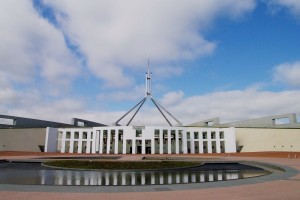Budget News for Small Business

The Federal Budget, which was announced on 2 April, is good news for Australian SMEs, proposing an increase in the instant asset write-off threshold to $30,000, lower tax rates, and a more streamlined tax dispute service for small business
The new budget would mean that the instant asset write-off threshold would increase from the original $20,000 to $25,000 first announced in January, and again to $30,000 announced with this Budget. Small businesses with an aggregated annual turnover of less than $10 million can instantly deduct purchases of eligible assets costing less than $30,000 that are first used or installed ready for use from 7:30pm AEDT 2 April 2019, until 30 June 2020. Businesses must act decisively to take advantage of this opportunity before the deadline.
Medium-sized businesses with an annual turnover of less than $50 million will also gain access to the scheme. The reduced tax liability resulting from the tax deduction is aimed to help SMEs reinvest in their businesses, employ more workers and expand. It is estimated that approximately 3.4 million businesses will be eligible for this new threshold.
SMEs could also benefit from the fast-tracking of the company tax rate cut. This is being cut to 25% for small and medium-sized companies, again with an annual turnover of less than $50 million. In addition, the rate of the tax discount, also referred to as the small business income tax offset, will increase to 16% by 2021–22.
A proposed dedicated Small Business Taxation Division will make it easier, cheaper and quicker for small businesses to resolve tax disputes. This would sit within the Administrative Appeals Tribunal. The proposed benefits include individual case managers, a lower application fee and faster decision outcomes.
There are also plans for improved access to much needed advice and finance. A twelve month pilot will see ten tax clinics established across metropolitan and regional Australia to provide free advice for unrepresented small businesses on tax issues, and there would be a $2 billion Australian Business Securitisation Fund to increase the availability, and reduce the cost, of finance to SMEs, by making targeted interventions in the SME securitisation market.
A new e-invoicing system for Australia is also on the cards, which could be a transformational step for SMEs. This will potentially save business a huge $28 billion in transaction costs over the next 10 years and increase opportunities to trade globally. This slots in with the announcement of creating a non-government organisation that would train SMEs on using digital processes, as this increasingly becomes more of a necessity for companies.
Cutting of red tape for SMEs was generally a strong theme, as the conditional plans would see a more streamlined GST reporting process through the reduction of the number of BAS GST questions. This could mean an easier life for around 2.7 million small businesses. A general reduction in financial reporting and audit costs, of more than $300 million over four years, will also be a welcomed benefit for small companies.
The government also plans to invest heavily in skills development and training, with a proposed investment of $525 million over five years in the vocational education and training (VET) sector to better equip Australians with the skills they need. This will deliver up to 80,000 additional apprentices over five years to enter occupations experiencing skill shortages. In addition to existing incentives, employers will be eligible for a $4,000 incentive payment, and apprentices will be eligible for $2,000, paid at key milestones in the apprenticeship.
To maximise any possible benefit gained should the proposed budget come into law, it is important to consider how to best use those savings to develop your business. As always, the experts at Harbour City Accounting are at your service to tailor the optimal financial strategy for your business needs, and provide any advice you may require.
